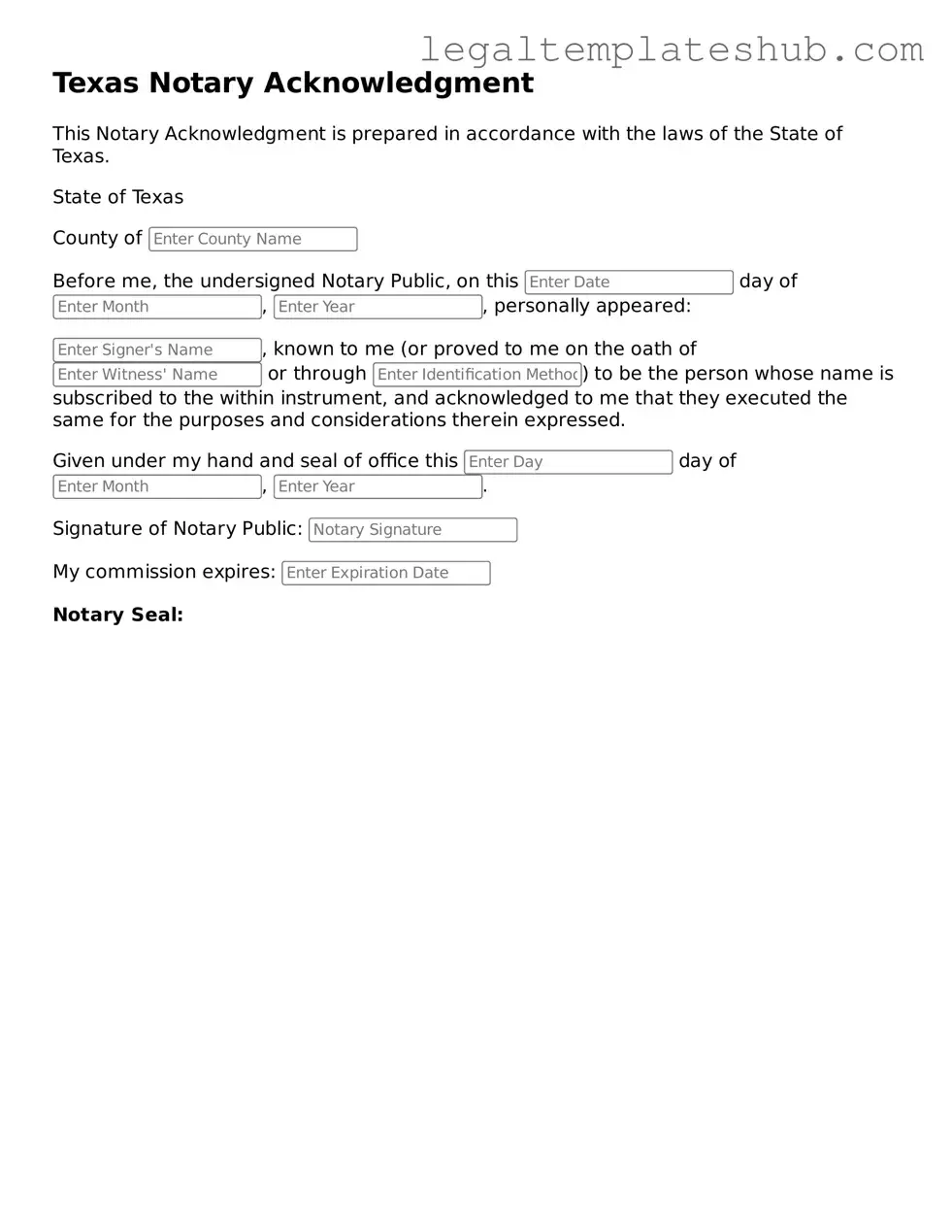Printable Notary Acknowledgement Document for Texas
The Texas Notary Acknowledgement form is an official document that verifies a person's identity and their willingness to sign a particular document. This form is essential for ensuring that signatures are authentic and that the signatory understands the contents of the document being signed. To get started with the process, fill out the form by clicking the button below.
Access Editor
